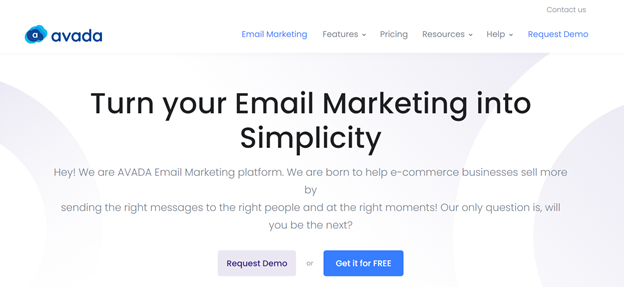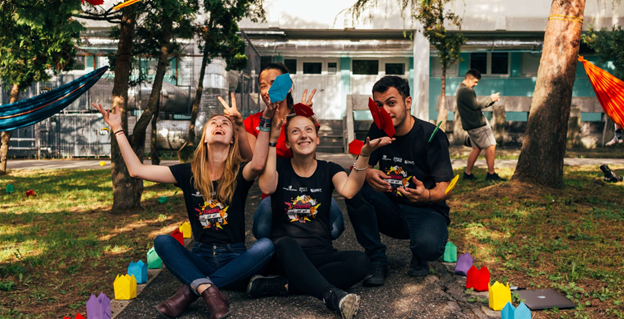What is Nonprofit Marketing? Plan, Strategies & Examples
In certain respects, non-profit marketing is nothing more than any other form of marketing. You have to get to know one another, keep getting to know each other, and give people something that encourages them to respond. If you donate, volunteer, sign up for an email list, engage in an event – these are the information about your campaigns.
But non-profit marketing at its heart allows you to remain above the minds of the people who are concerned with your mission. Your company has to be seen as part of their life. This calls for relentless effort and intelligent strategic planning in today’s high-speed media and online environment.
The best part is that efficient marketing is not costly and does not need to work with a team of marketers. You can get a lot out of the work you’re doing if you’re arranged and plan ahead and really care how the marketing campaigns work. We’re here to help you do this non-profit marketing guide. The following are the best marketing and promotional tactics for non-profit use to expand your business and improve the world.
What is Non-profit Marketing?

Non-profit marketing uses marketing and strategies to enhance the purpose and mission of an organization, request donations, and attract volunteers and supporters.
Your non-profit organization, which would probably take your whole time, will sound like an extra burden that is not worth it. In this case, non-profit inbound marketing will allow you to attract new supporters, interact with valuable donors, get people engaged and encourage your community.
What can Non-profit Marketing help?
Many companies do not closely monitor the effects of their marketing activities. This brings people to ask what meaning marketing really has. A strategically devised marketing solution for non-profits can be of significant advantage for the growth of the organization – it understands the unique needs, dynamics, and nuances of the non-profit sector, if properly carried out and monitored.
Raise awareness
Your community members, people around the country, and online viewers must all understand who you are and how you work. Growing marketing recognition will allow the non-profit brand to be recognized and its mission clear and loud.
Attract donors

You don’t have to fundraise as actively during the year to accomplish your funding objectives if you have a network of long-term donors. Marketing allows you to attract new donors, transform current donors into long-term ones and protect main brands.
Recruit volunteers
You are not gaining capital on your own. You need dedicated and enthusiastic volunteers who are ready to work to help you. Marketing can foster volunteers for your company who want to make a difference in their Community. In addition, volunteers twice as much as non-volunteers.
Raise fund
By selling goods or services, a company must generate profit. To achieve this, the non-profit organization needs funding. This ensures that you can actively promote the approach to a problem.
Connect your organization with a wider community

Those individuals you would like to support might not be aware of or have services to benefit your organization. You have to communicate with them, take them in, and show them exactly what they can do with your help.
Building your non-profit marketing plan
Like every other agency, non-profit organizations must also prepare ahead to implement their marketing strategies efficiently and achieve their objectives. The best way to do this is to build a strong nonprofit marketing strategy.
A non-profit marketing plan is a document outlining the marketing objectives, strategy, target audience, budget, and more of an entity for a specific period of time. It directs your marketing team to not waste money in the wrong place and will help the company achieve its goals.
1. Identify your vision and mission
Your mission and vision must derive from any aspect of your marketing strategy. So much more than just statements is a mission and vision. They are the basic values that characterize the future that you strive to build and get closer to this reality every day.
You identify the organization’s strategic goals and guide those strategic priority areas toward which your marketing and communication efforts should be directed.
We recommend that you begin your marketing strategy with a mission statement and vision statement from your company. It will make everyone interacting with your strategy the most important thing.
2. Define your goals and objectives

The majority of companies have vacuumed their marketing objectives. They do not start with their strategic plan and mission and then establish compatible marketing objectives that will advance both.
As a result, the targets are fine on paper, but they don’t use time, budgets, and resources strategically and carefully. Your non-profit marketing strategy exists to turn your company’s vision and broad goals into strategic, operational objectives.
Following an objective and priority setting process like this, you can develop and prioritize more practical and achievable non-profit marketing targets to avoid overwhelming your team or making it your aim.
There are some ways you can use marketing to leverage and achieve your goals. Using the SMART goal-setting strategy may be one helpful option for your organization. You will convert larger organizational targets into operational and strategic marketing goals using the SMART approach.
For example, here is a way to describe a marketing campaign SMART target in the rescue center that encourages pet rescue.
-
Specific - Raise awareness about pet rescue by posting 2 blog posts a week
-
Measurable - Increase blog traffic by 10% or Increase adoption rate by 10%
-
Attainable - The blog traffic had increased by 7% last week, so it is attainable to raise the aim to 10%
-
Relevant - An increase in blog traffic will boost awareness of our organization, educate the community about pet rescue.
-
Time-bound - start producing two posts per week in the next month
3. Identify and understand your audience

It is time to continue to define your core audience with your goals and objectives. Non-profit marketing differs from other forms of marketing because it is probable that the company targets many groups: constituents, clients, volunteers, and donors.
Each of these audiences or buyer personas must be defined and understood because the marketing can vary depending on who you speak to.
These profiles can be used to support your employees before engaging with them and creation of marketing materials to meet your target audiences.
There are many ways to do prospect research and learn about your audience. First, you might think of 2-3 people who represent your ideal or traditional stakeholder in your society, and then combine their traits into a fictional individual. Also common is the joining of Facebook or LinkedIn communities, in which your people actively respect your interests and concerns.
Also, A CRM for segmenting the groups is a simple way to organize the various audiences. You can easily send targeted ads to the respective groups by removing contacts from the tags and lists.
4. Create your key messages
Key messages provide details about your non-profit organization that your audiences want to read, note, and share. The main points you need to hear, consider and recall your non-profit are key messages. They build context for the work you do, the problems you want to talk about, and the behavior you want people to take to advance your goal.
Many people in your company may have their versions of key messages, but sometimes they are unreliable and inconsistent. Your team brings personal knowledge to how they speak about your company but discusses the broader picture behind what you do and why it is not always convenient.
That is why we often recommend that our customers create a crucial key message around the company as part of their marketing strategies. Key messages connect your organization, improve the marketing of your organization and help coordinate your audiences.
Whoever does the ads, you can be assured the same thing is said and promoted. You know what you’ll be saying in your marketing messages with these produced in advance.

5. Select your suitable marketing tactics
Most marketers want to leap directly into this part of the planning phase, but ou must do the work outlined in the earlier pieces before you can effectively choose tactical offerings.
Now that you know what to achieve (your goals), whom to target (your key audience) and what to say to them (your key messages), you can choose the tools to do so (your tactics).
Marketing strategies include platforms such as e-mail marketing, social media, events, etc. Whatever strategy you use, make sure you prepare it carefully before and while you do it.
There are a few questions you can ask to relatively measure your tactical planning:
-
What will you do with the proposed strategies?
-
When will you execute these tactics?
-
Who is responsible for these strategies?
-
What is the allowed budget to execute these strategies?
-
How do these tactics comply with the organization’s marketing goals?
Now that you are aware of what strategies you will use to attain your objectives, it is time to determine exactly what you will do with each of them.
Strategic planning is part of the overall marketing strategy of the community. The way you approach and affect your company and how you implement your marketing strategy is just as critical. Make sure the team has a strong strategy and a full understanding of it before you get in any of these tactics.
6. Create an action timeline

This is one of the processes in which the majority of non-profits fall short. They do this by setting objectives, developing messages, and preparing tactics, but do not put the tools and processes in place to ensure that their strategies are fulfilled.
It is a comprehensive marketing timeline that gives you room to schedule and assign the tasks responsible for your marketing efforts in detail.
Don’t think you’ve got to take action every month on every strategy. Plan your tasks in a way that your team can handle and is consistent with your objectives.
7. Measure your marketing performance

The measurement part of your non-profit Marketing Strategy is where you decide if all your strategies and activities really help you accomplish your objectives.
Regularly scheduled reporting and review will help you find out what works and what changes are needed. Beware of the observable performance metrics for each of you to select and develop your marketing channels.
You need to remain consistent with your targets to measure your marketing success. One of the objectives that you set earlier in the phase of planning might have been simple, measurable objectives.
For any purpose you can track weekly or monthly, you can set a measurable objective performance indicator in this section. It is not a simple task to choose correct observable measures of success. Historical data or records from other, related organizations are needed.
A certain level of foresight is also necessary. You need to see how your performance figures adjust all year round as your activities are expanding and contracting in various fields.
You can track these success metrics using the tools such as Google Analytics and other social media sites, such as Facebook, Twitter, and many others.
You can find out precisely what you want to test before you start promoting your non-profit, as well as how your marketing performance and its effects are to be determined.
7 best non-profit marketing strategies to help your organization thrive
You have to prove to people how your organization will make a significant difference, and why it works if you want to raise funds for your nonprofit.
The best way to do this is with the right marketing strategy to convey your goal, your service, and your passion effectively to those who care about your cause. Here are the world’s leading marketing tactics used by NGOs all over the world.
Content marketing

Content marketing is an important marketing resource for any non-profit organization. At least one article, video, podcast, or webpage should be produced per month on a non-profit topic for you.
Content informs the public about your mission, vision, news, and developments in the industry. It also takes visitors, subscribers, donors, and managers together.
Content can be shared and can be transformed and converted into various kinds of media, thereby saving valuable time and energy for the marketing team.
That’s it – the marketing of content at the core. You can do more after making the material, and there are some choices on this list that fill other spaces.
The content is the basis. You need to say something, something that people want to hear, and that will bring your company to your notice. If you do not say something, people will break away from discussions. So what can you deliver to keep your audience stay in? Here are a few ideas to get you started.
-
Problem-solving - Writing blog posts that can tackle an issue related to your organization’s main concerns
-
Storytelling - Tell a story about a specific individual who was inspired by your organization to take real actions
-
Announcement - Use attractive wording to promote a fund-raising event
-
QnAs / FAQs - Writing short articles answering questions with various media types attached (e.g. short videos, infographic, testimonials, etc.)
Develop these into your website’s best-written blogs, videos, articles, or web pages, and your search engines can allow people who care about this same problem to find your website.
Do not let it confuse you with this idea of content marketing. It’s enough to start only one new page every month. Even the least profitable organizations will generate a page every month. You just have to dedicate yourself to it – this means putting it on your plan and not budging.
Email marketing

You may periodically use email to request volunteers or to confirm an online donor, but this is not sufficient. Email marketing is a highly efficient and powerful marketing tool, especially for non-profit organizations.
You can email your whole email list regularly – at least once a month. And you will hopefully start segmenting your email list and sending emails to different segments. The most cost-effective way of fundraising is email collecting as it takes little time with no material resources required.
It can raise funds, run campaigns, recruit volunteers, conduct market activities, sign petitions, open letter writing to leaders, and conduct surveys.
Email is now the leading media to communicate easily and directly attract period with donors. This cannot be approached by social media because it’s full of too many obstacles. You don’t raise as much money as you can if you don’t send any emails or send enough emails.

For any marketing plan using email marketing, it’s essential to adopt an email marketing service provider that can tackle the issues involved with manual work Smart email marketing applications like AVADA Email Marketing Platform help you monitor email orders automatically and transform visitors. All the most important information on email campaigns, including abandoned emails and new emails, are accessible.
Event marketing
Event marketing is one of the most successful methods for creating an organization’s recognition, connecting to your audience, raising money, and supporting your cause.
Events like charity events bake selling events, auctions, and more can be organized to raise money, engage people and raise awareness about your effectiveness. A perfect way to increase awareness about your activities is to present a press release.

Take Great Falls Animal Shelter Sidekicks’ Fall Fantasy Dog Show as an example of an effective and fun fund-raising campaign. The guests join their dogs to show their tricks in many fun competitions, including Waggiest Butt, Best Biscuit Catcher, and Most Mysterious Heritage.
They have chosen to match the dog show with other events including the pumpkin decoration station. Any time of year, customized activities add something unique to an already innovative concept for fundraising.
In this event, the interaction with real pets has made donors’ experience much more enjoyable, and it can encourage donors to enjoy an experience with the whole family.
Social media marketing
A strategy for social media marketing is an economical way of reaching new contributors and becoming more successful. Social networking sites like Twitter, Facebook, and Instagram can help a wide variety of people with an interest in your business.
Install two or three channels that are the best way to find your target market instead of being successful on any social media site beyond there.
Then, concentrate your efforts on resources and marketing. The greatest element of this marketing is the lack of physical boundaries in social media.
You can talk to people in your own backyard or around the world so that you can broaden the scope of your nonprofits. Here are some ways to execute your social media marketing.
Use Facebook’s fundraising feature

Facebook helps non-profit organizations raise money by making them sign up for some exclusive services. You can add a “Donate” button to your Facebook page if your organization fits those instruments and enable your associates and followers to raise money for your sake.
The fact that people launch fundraisers for their preferred non-profits on their anniversary is becoming increasingly popular. Facebook also tells people about coming birthdays.
Post about the team’s progress
If it hopes to receive massive public support, every non-profit must increase trust. You want to make sure your donations go to the right people.
The best way to achieve credibility is to demonstrate to the community that your company is made up of people like the - people who genuinely dedicate themselves to your mission.
Share content behind the scenes, such as a case, distribution drive, or fundraising that shows your staff or volunteers working hard, to your audience.
Using app features such as Instagram Stories or Facebook Live to provide users with real-time updates. That makes your supporters feel more engaged, even if they cannot be there personally, in your organization’s activities.
Post the participant-generated content
The key to high social media growth is the sharing of related information. And there’s no better method to connect with your audience than by engaging it in the process of creating content.
You may, for instance, ask donors and volunteers to tell stories about your campaign and then repost them on your pages. Another idea is to make the campaign an exclusive, branded hashtag to make it viral. Reposting content created by users on your social media sites shows that you value it and acknowledge its support.
Video marketing

Video is an excellent way of showing influence, telling stories, and informing people about their mission. Marketers have long known that the most attractive medium is to combine images, sound, and motion.
The best nonprofit video content achieves this by producing impressive digital stories not based on boring facts and statistics. Digital video stories are also important ways to create and retain communities. This is because they offer you the ability not only to provide knowledge in an attractive media format but also to communicate with your audience through the creation of their experience with your brand.
The National Forest Foundation, for instance, shares a playing Video from Wibbitz of puppy pictures obtained for their trail hikers in the picture contest.
Featured users would likely post video content close to their social networks. Thus this kind of non-profit video campaign is capable of splashing social media.
Volunteers pursuit

Volunteers are allied to non-profit organizations. They are also potential dedicated fundraisers. Your non-profiteers will benefit from the right combination of dedicated volunteers more quickly and more effectively than with your paying employees.
And the great thing is that you can find voluntary staff from across the globe with online resources. For instance, it takes time to build a successful website and social media page. Although it is imprudent to hand over key tasks that require constant focus to the volunteers, it can help you achieve tremendous growth by assigning them unique tasks for which you have no time.
Peer-to-peer fundraising programs

You may be able to run a peer-to-peer campaign once you start gaining fans, supporters, and email subscribers who value what you do. Peer-to-peer means your followers are your fundraisers as they raise money for you from their friends, relatives, employers, and everyone else to whom they reach.
They may organize live activities, such as home gatherings or workshops, contact and send postcards to their email contact lists and social media followers. Importantly, they are going to meet people you would never have met otherwise.
Fortunately, Facebook has now offered a helping hand with its Fundraising feature that allows organizations to let people donate to their page on behalf of your organization.
This helpful feature requires no technical skills to install, which makes it more accessible to any non-profit organization even with the lowest budget resources.
Networking with business champions

Don’t ever underestimate the power or influence that a business champion can bring to your organization. Corporate allies are important and powerful. When the company owner cares enough for your mission, you meet even more people, whom you would never otherwise reach out to.
Most importantly, it is an immediate confidence guarantee in which the consumers trust the company, and that trust is passed to the company’s profit-making system directly.
In your advertising, running sales while a part of the smart business owner is going for your non-profit or other innovative tactics. If you find only one true, dedicated champion, your non-profit growth will be great. Don’t ignore the coverage of the newspapers.
Share your experience with reporters who search for reliable sources of information or give a press release on your company’s performance to media outlets. This move alone also offers non-profit organizations significant growth and marketing opportunities.
Some non-profit marketing examples for references
Be Vocal: Speak Up for Mental Health

The non-profit organization has collaborated with award-winning documentary writer Shaul Schwarz on a 21 minute documentary on mental health takes a new approach, ‘Beyond Silence,’
The story portrays three people with mental illness, frankly depicts their personal challenges but emphasizes how the willingness to speak out about these struggles has changed their life positively.
This example demonstrates how important it is to step back and re-evaluate how you tell your story. New voices added, formats experimented or content shifted to new platforms will help extend your reach and bring you closer to your audience and objective.
The upgrading of your background and creative quality will contribute to deepening the commitment and capture the interest of your audience so be not afraid of being brave about the video.
Social Tees Animal Rescue

The success of the dating app Tinder was used by this New York-based animal rescue shelter to match their dogs to prospective adopters.
They developed Tinder profiles for dogs and would receive updates about how to adopt a dog if a match were to be right. If the Tinder match could not be adopted, it was recommended to donate, or volunteer to walk the dogs.
The theory is that when you want affection and friendship people turn to Tinder - and dogs are perfect for love and devotion. They began with 10 profiles of dogs and in the first week, they had 2700 matches. This is a very smart way to use an existing social media platform to reach your audience in a completely different way.
SafeNight
SafeNight was developed by Caravan Studios and the Safe Shelter Collaborative for a mobile application. This provides a safe way to provide crowdsource support for emergency shelters for domestic abuse shelters and trafficking community organizations.
If a person urgently needs a place to stay, such as someone escaping an abusive partner with no shelter space, the domestic abuse shelter staff member may request money for a hotel room.
Those who downloaded the app will be informed that a person is in need and will be able to donate to help cover hotel room costs immediately. The donation is safe and tax-deductible. This is an excellent way to use an app to make immediate donations to the community for a very important issue.
Human Rights Campaign

The Human Rights Campaign provides a very amazing example of how to circulate the word about a campaign using Facebook profile images.
In 2015, the Human Rights Campaign urged people to change their Facebook photos to the logo of the organization when the Supreme Court took a key decision on marriage equality - a red “equal” sign.
The image was used by celebrities like Beyonce and brands like Bud Light and HBO. Users updated their picture to show their support for matrimonial equality and the campaign became viral, rapidly spreading across Facebook.
Millions of Facebook users participated, leading to news organization coverage. The use of community interaction to spread a message is a very impressive example.
Final words
Your non-profit organization deserves the greatest recognition and support. Make this possible by preparing and carrying out innovative marketing campaigns to help and promote your campaign.
Your company may not be profitable, but can still benefit from traffic, funds, and knowledge brought about by systematic marketing.
And these events and methods not only contribute to fostering your organization but take your team and volunteers with a valuable burden, who you spend more time devoting to your mission and stakeholders.
New Posts






